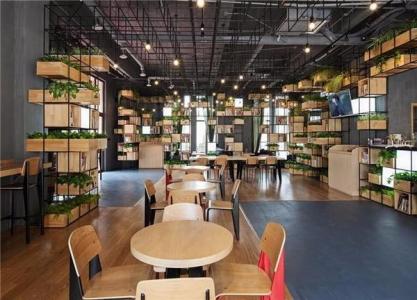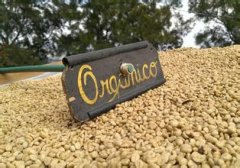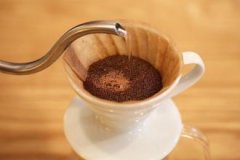A brief introduction to the treatment method of grinding degree and baking degree of Hawaiian boutique coffee beans with strong flavor

If you want to give the world's coffee beans beauty pageant, Kona coffee beans is undoubtedly the first place. The coffee made from Kona coffee beans has a strong flavor, with aromas of nuts and cinnamon, and moderate acidity, which makes it impossible to pick out shortcomings. The growing environment of coffee beans Kona coffee beans grow on a volcano in Hawaii, not on the top, of course, but on slopes. If the taste of Kona coffee is similar to anything, it is Central American coffee, which is not very high in texture, but it is very sour and rich in taste. When Kona coffee is just made, it is very fragrant, so the average quality of Kona coffee is very high. If you can't get used to the sour taste of African coffee and the taste of other coffee, then you can try it. This fresh coffee may be to your taste. The sun and precipitation in Hawaii are favorable for coffee cultivation, and Hawaii is located in the tropics, where there are occasional tornadoes, but there is no frost, so it is very suitable for the growth of Kona coffee beans. no wonder the coffee here is so delicious. There are not many rare Kona coffee in the world, and you will be lucky if you can taste the purest Kona coffee. In fact, Kona coffee has become a treasure, not only because of its small quantity, but also because of its high quality, which has a lot to do with the strict coffee industry in Hawaii. Because Hawaii has high requirements for coffee production, they can be said to have the highest level of quality. In fact, even Kona coffee has a hierarchical system, which has a total of three levels, namely, No. 1 coffee, good coffee, and very good coffee. Few of the Kona coffee sold in the world today are real Hawaiian Kona coffee. In fact, in addition to Kona coffee, another kind of coffee is Kaj Farm Coffee in Hawaii, which is also a very good coffee. The coffee produced in Hawaii will make everyone feel the real taste of Hawaii. So I hope you don't forget to taste the authentic coffee here. They won't let you down. Hawaiian tourist coffee brings you different enjoyment.
Kona coffee has been grown in Kona since the early 19th century, and it has never been interrupted, and only the coffee produced here can be called "Hawaiian Kona". The raw beans of Hawaiian Kona Coffee are usually 100 packages of individual coffee beans. Kona coffee beans are also often used to make mixed coffee along with coffee beans from other parts of the world, and mixed beans of Kona coffee beans and other beans are marked with "Kona mixed beans (KonaBlend)" on the package. Unfortunately, the content of Kona beans in this mixed bean may be very low, and the minimum content of Kona beans in Hawaii that can use the "Kona" label is only 10%. So, if you're not in Kona in Hawaii, it's hard to have 100% Kona coffee beans.
The real Hawaiian Kona coffee makes people enjoy the unique pleasure and leads you slowly into the detached state of tasting coffee. And this comes entirely from the oldest Arabica coffee tree.
Hawaii is the only state in the United States that grows coffee, which is grown on the five major islands of the Hawaiian Islands: Oahu, Hawaii, Maui, Kauai and Moroca. Coffee from different islands also has its own characteristics. Kauai coffee is soft and smooth, Muroca coffee is high in mellow and low acidity, and Maui coffee is moderately acidic but has the strongest flavor. Hawaiians are extremely proud of the Arabica coffee beans they grow 100% home-grown.
Hawaii is the largest island in the Hawaiian archipelago, so it is also called the theBigIsland. Kona Coffee is produced in the west and south of the Kona region of Hawaii. Coffee trees are scattered on the slopes of Hualalai and MaunaLoa, which is 150m to 750m above sea level, which is suitable for coffee growth.
The excellent quality of Kona coffee benefits from the suitable geographical location and climate. Coffee trees grow on the slopes of volcanoes, and their geographical location ensures the altitude needed for coffee growth; the dark volcanic ash soil provides the minerals needed for coffee growth. The climatic conditions are very suitable. In the morning, the sun gently passes through the air full of water vapor. In the afternoon, the mountains will become more humid and foggy, and the white clouds surging in the air are natural umbrellas for coffee trees. And the evening will become sunny and cool, but there is no Frosts Descent. Because of the suitable natural conditions, the average yield of Kona coffee is very high, reaching 2240 kg per hectare, while in Latin America, the yield of coffee per hectare is only 600kg ~ 900kg.
Hawaii's most famous coffee bean and coffee producing area is Kona kona, which is located in the southwest of the Big Island, 20 miles long and 2 miles wide, covering the slopes of Hualalai and Mauna Loa. Only coffee beans grown in this area and subject to the most stringent certification standards can be sold under the trademark Kona. Today, about 100 farms have produced coffee beans that meet these standards, and more and more farms are expected to follow suit in the future. The Hawaiian islands have long been recognized as a paradise on earth. After nearly two centuries of efforts to grow coffee, the term Kona kona has almost equated with quality. Although all the islands in Hawaii have coffee trees grown for commercial purposes, the Big Island has the largest number of coffee farms, about 650 farms, but these coffee farms are relatively small. With a total of less than 2000 acres of planted woodland, there are only 25 coffee plantations operating on the islands of Maui, Molokai, Oahu and Kauai, but they are much larger and produce more than three times as much as the Big Island. Surprisingly, Kauai Island has the largest coffee-growing area of any island, with more than 4000 acres, but all are managed by the same operator, while Molokai Island has only 550 acres of coffee-growing land, with even fewer Maui and Oahu. Most Hawaiian coffee farmers still pick fresh coffee cherries to sell today, but in recent years more and more people are committed to adding value to their coffee bean products, so most of them go to their own post-processing, drying, grinding and baking their own coffee beans.
The characteristics of coffee beans mentioned earlier that the taste of Kona coffee beans is very good, and the appearance of coffee beans is also very good, not only has full fruit, but also has beautiful luster.
Important Notice :
前街咖啡 FrontStreet Coffee has moved to new addredd:
FrontStreet Coffee Address: 315,Donghua East Road,GuangZhou
Tel:020 38364473
- Prev

A brief introduction to the planting of soft and smooth Hawaiian boutique coffee beans, geographical location, climate and altitude
Because it grows on volcanoes and has high-density artificial farming, each bean can be said to be a spoiled lady, and the beautiful, plump and baby-like Kona coffee has been grown at home. At first, only men were allowed to work in the coffee garden, and later women joined in. Hawaiians prefer to rely on this kind of household production.
- Next

A brief introduction to the flavor, taste and aroma characteristics of fine coffee beans in Lindong, Sumatra.
The most famous coffee producers in Asia are the islands of Malaysia: Sumatra, Java and Kaliman. Sumatra manning coffee from the Indonesian island of Sumatra is the most famous, with two famous names, Sumatra mantenin DP first class and collection Sumatra mantenin. Sumatra Mantenin DP has a long aftertaste, with a wild fragrance.
Related
- Detailed explanation of Jadeite planting Land in Panamanian Jadeite Manor introduction to the grading system of Jadeite competitive bidding, Red bid, Green bid and Rose Summer
- Story of Coffee planting in Brenka region of Costa Rica Stonehenge Manor anaerobic heavy honey treatment of flavor mouth
- What's on the barrel of Blue Mountain Coffee beans?
- Can American coffee also pull flowers? How to use hot American style to pull out a good-looking pattern?
- Can you make a cold extract with coffee beans? What is the right proportion for cold-extracted coffee formula?
- Indonesian PWN Gold Mandrine Coffee Origin Features Flavor How to Chong? Mandolin coffee is American.
- A brief introduction to the flavor characteristics of Brazilian yellow bourbon coffee beans
- What is the effect of different water quality on the flavor of cold-extracted coffee? What kind of water is best for brewing coffee?
- Why do you think of Rose Summer whenever you mention Panamanian coffee?
- Introduction to the characteristics of authentic blue mountain coffee bean producing areas? What is the CIB Coffee Authority in Jamaica?

